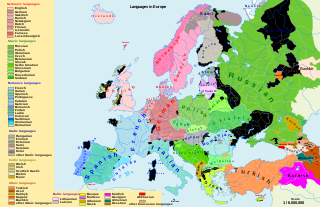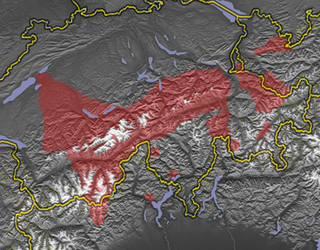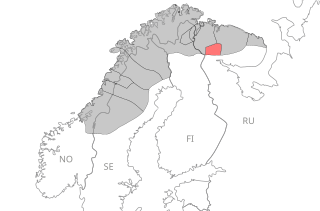
There are over 250 languages indigenous to Europe, and most belong to the Indo-European language family. Out of a total European population of 744 million as of 2018, some 94% are native speakers of an Indo-European language. The three largest phyla of the Indo-European language family in Europe are Romance, Germanic, and Slavic; they have more than 200 million speakers each, and together account for close to 90% of Europeans.

West Flemish is a collection of Low Franconian varieties spoken in western Belgium and the neighbouring areas of France and the Netherlands.

The Germanic languages are a branch of the Indo-European language family spoken natively by a population of about 515 million people mainly in Europe, North America, Oceania, and Southern Africa. The most widely spoken Germanic language, English, is also the world's most widely spoken language with an estimated 2 billion speakers. All Germanic languages are derived from Proto-Germanic, spoken in Iron Age Scandinavia, Iron Age Northern Germany and along the North Sea and Baltic coasts.

German is a West Germanic language in the Indo-European language family, mainly spoken in Western and Central Europe. It is the most spoken native language within the European Union. It is the most widely spoken and official language in Germany, Austria, Switzerland, Liechtenstein, and the Italian autonomous province of South Tyrol. It is also an official language of Luxembourg, Belgium and the Italian autonomous region of Friuli-Venezia Giulia, as well as a recognized national language in Namibia. There are also notable German-speaking communities in France (Alsace), the Czech Republic, Poland, Slovakia, Denmark, Romania and Hungary (Sopron). Overseas, sizeable communities of German-speakers are found in Brazil, South Africa (Kroondal), Namibia, among others, some communities have decidedly Austrian German or Swiss German characters.
Swiss German is any of the Alemannic dialects spoken in the German-speaking part of Switzerland, and in some Alpine communities in Northern Italy bordering Switzerland. Occasionally, the Alemannic dialects spoken in other countries are grouped together with Swiss German as well, especially the dialects of Liechtenstein and Austrian Vorarlberg, which are closely associated to Switzerland's.
Plautdietsch or Mennonite Low German is a Low Prussian dialect of East Low German with Dutch influence that developed in the 16th and 17th centuries in the Vistula delta area of Royal Prussia. The word Plautdietsch translates to "flat German". In other Low German dialects, the word for Low German is usually realised as Plattdütsch/Plattdüütsch or Plattdüütsk, but the spelling Plautdietsch is used to refer specifically to the Vistula variant of the language.

Swabian is one of the dialect groups of Upper German, sometimes one of the dialect groups of Alemannic German, that belong to the High German dialect continuum. It is mainly spoken in Swabia, which is located in central and southeastern Baden-Württemberg and the southwest of Bavaria. Furthermore, Swabian German dialects are spoken by Caucasus Germans in Transcaucasia. The dialects of the Danube Swabian population of Hungary, the former Yugoslavia and Romania are only nominally Swabian and can be traced back not only to Swabian but also to Franconian, Bavarian and Hessian dialects, with locally varying degrees of influence of the initial dialects.

Northern Bavarian is a dialect of Bavarian, together with Central Bavarian and Southern Bavarian. Bavarian is mostly spoken in the Upper Palatinate, although not in Regensburg, which is a primarily Central Bavarian–speaking area, according to a linguistic survey done in the late 1980s. According to the same survey, Northern Bavarian is also spoken in Upper Franconia, as well as in some areas in Upper and Lower Bavaria, such as in the areas around Eichstätt and Kelheim. Few speakers remained in the Czech Republic, mostly concentrated around Aš and Železná Ruda, at the time of the survey, but considering the time which has passed since the survey, the dialect may be extinct in those places today. If it still exists there, it would include the ostegerländische Dialektgruppe. Ethnologue estimates that there were 9,000 speakers of Bavarian in the Czech Republic in 2005, but does not clarify if these were Northern Bavarian speakers.

Alemannic, or rarely Alemannish, is a group of High German dialects. The name derives from the ancient Germanic tribal confederation known as the Alemanni.

Walser German and Walliser German are a group of Highest Alemannic dialects spoken in parts of Switzerland, Italy, Liechtenstein, and Austria (Vorarlberg).

Akkala Sámi, also referred to, particularly in Russia, as Babin Sámi, was a Sámi language spoken in the Sámi villages of Aʼkkel, Čuʼkksuâl and Sââʼrvesjäuʼrr, in the inland parts of the Kola Peninsula in Russia. Formerly erroneously regarded as a dialect of Kildin Sámi, it has recently become recognized as an independent Sámi language that is most closely related to its western neighbor Skolt Sámi, and the two are somewhat mutually intelligible.

Low Alemannic German is a branch of Alemannic German, which is part of Upper German. Its varieties are only partly intelligible to non-Alemannic speakers.
The Manenguba languages, also known as the Mbo cluster, are a group of closely related Bantu languages spoken on and around the Manenguba mountain range in south-western Cameroon.
Sakao is an Oceanic language spoken on the northeast horn of Espiritu Santo, Vanuatu.
Kulung is one of the Kiranti languages. It is spoken by an estimated 33,000 people. Van Driem (2001) includes Chukwa as a dialect.

The Santa Cruz language, locally known as Natqgu or Natügu, is the main language spoken on the island of Nendö or 'Santa Cruz', in the Solomon Islands.

The Yukulta language, also spelt Yugulda, Yokula, Yukala, Jugula, and Jakula, and also known as Ganggalidda, is a Tangkic language spoken in Queensland and Northern Territory, Australia. It was spoken by the Yukulta people, whose traditional lands lie on the southern coast of the Gulf of Carpentaria.
Polci is an Afro-Asiatic language of Bauchi State, Nigeria. It is part of the Barawa cluster, which is in turn part of the West Chadic language family.
Ipili is an Engan language of the East New Guinea Highlands in Enga Province, Papua New Guinea. The name of the language means 'salt-people' in Huli language. There are 26,000 Ipili speakers.
Nuaulu is a language indigenous to the island of Seram Island in Indonesia, and it is spoken by the Nuaulu people. The language is split into two dialects, a northern and a southern dialect, between which there a communication barrier. The dialect of Nuaulu referred to on this page is the southern dialect, as described in Bolton 1991.










